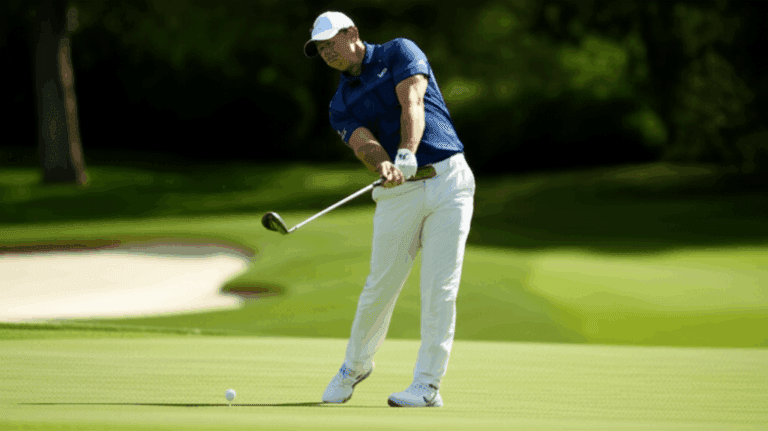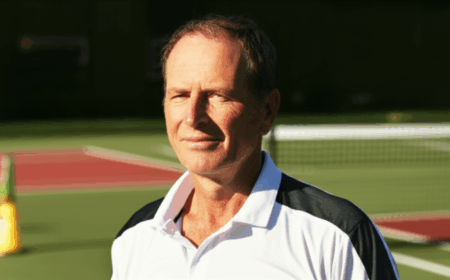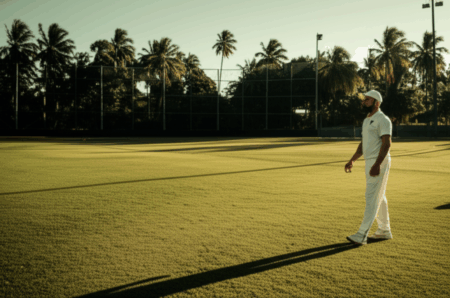Rory McIlroy, one of the most recognizable figures in golf, hasn’t always been the picture of peak physical condition that he is today. His journey to becoming a powerhouse on the PGA Tour is a testament to his dedication to fitness and nutrition. This transformation wasn’t just about aesthetics; it was driven by a serious injury scare that forced him to re-evaluate his approach to the sport.
The Wake-Up Call: Injury Strikes
In 2010, McIlroy suffered a back injury that served as a major turning point in his career. The injury forced him to take a month-long break from the sport. More importantly, it led him to seek the advice of Dr. Stephen McGregor, a fitness expert who had previously worked with professional sports teams like Manchester City and the New York Knicks.
McIlroy recalled the doctor’s stark warning: “If you don’t start taking care of yourself or getting stronger, you can seriously jeopardise how long your career is.” This wake-up call motivated McIlroy to commit to a comprehensive fitness plan, realizing that physical conditioning was essential for long-term success and injury prevention.
Building a Foundation: From Zero to Athlete
Before his injury, McIlroy wasn’t particularly fond of the gym. In a 2015 promotional video for Nike, he openly admitted his initial struggles. “I wasn’t really big into going to the gym, and I couldn’t stand on one leg for more than 10 seconds. I couldn’t hold a plank for more than 30 seconds,” he confessed. This honesty highlighted the significant effort he invested to reach his fitness goals.
McIlroy started with the basics and gradually increased the intensity of his workouts. Between 2005 and 2010, he managed to decrease his body fat percentage from 24% to a mere 10%, while simultaneously adding 20 pounds of muscle. This transformation demonstrated his commitment and the effectiveness of his training program.
The Gym Routine: Power and Stability
McIlroy’s current gym routine involves 90-minute sessions, five days a week. His workouts focus on building overall strength, with specific exercises designed to enhance his golf swing.
Some key exercises in his routine include:
- Landmine Presses: These strengthen the shoulders and contribute to increased swing speed. The exercise involves lifting one end of a barbell, providing a unique angle of resistance.
- Box Jumps and Bag Flips: McIlroy pushes his physical limits with explosive movements like box jumps and flipping 120lb bags. These exercises develop power and explosiveness, crucial for generating clubhead speed.
- Deadlifts, Pull-ups, and Planks: These form the core of McIlroy’s workout, building overall strength and stability.
- Dumbbell Work and Lunges: These exercises target specific muscle groups and improve balance. Weight-overhead reverse lunges, in particular, enhance shoulder stability.
- Rotation Exercises: These improve flexibility and core strength. McIlroy uses a medicine ball, rotating his body from side to side while throwing and catching it.
McIlroy’s trainer, Dr. Steve McGregor, emphasizes a progressive approach to training. The initial focus is on stability and flexibility, gradually advancing through phases of range of motion, endurance, strength endurance, strength, and power. This comprehensive approach ensures that McIlroy’s body is prepared for the demands of professional golf.
The Nutritional Edge: Fueling Performance
McIlroy’s dedication to fitness extends beyond the gym; he also pays close attention to his diet. Recognizing the importance of nutrition in athletic performance, he made significant changes to his eating habits.
A key change was increasing his protein intake. In a 2023 interview with Golf.com, McIlroy stated, “I’d eat a gram of protein per pound of body weight. I still do that, 170 grams per day of protein.” This high-protein diet supports muscle growth and recovery.
McIlroy also made some specific dietary restrictions. He eliminated pork and eggs, explaining that they “just don’t agree with my body.” He also adopted a gluten-free diet, which he believes is beneficial for his overall health. These changes are personal and based on how his body responds to different foods.
While McIlroy focuses on healthy eating, he doesn’t completely deprive himself of treats. He enjoys chocolate and ice cream occasionally, emphasizing the importance of balance and avoiding guilt associated with food. “I don’t think you want to demonise food,” he said. “It’s about being able to fit it into your diet so you can have it every once in a while and feel good about it and not feel guilty.”
Addressing Concerns: Longevity vs. Intensity
McIlroy’s intense training regimen has raised concerns among some analysts, who worry about the potential for long-term injuries. Brandel Chamblee, a golf analyst, drew comparisons to Tiger Woods, whose career has been plagued by physical setbacks.
However, McIlroy argues that his strength training is designed to prevent injuries and prolong his career. He focuses on strengthening his core, lower back, glutes, and legs, believing that this provides a solid foundation for his swing and helps him maintain stability.
Golf legend Gary Player also weighed in on the debate, defending McIlroy’s fitness efforts. While Player acknowledged that his own body never underwent a drastic transformation, he supported the idea of golfers prioritizing physical conditioning.
A Model for Modern Golf
Rory McIlroy’s transformation exemplifies the increasing importance of fitness in professional golf. He recognized the need to adapt his lifestyle after an injury scare and has since become a role model for aspiring golfers.
His dedication to both training and nutrition has not only enhanced his performance but also increased his longevity in the sport. By prioritizing his physical well-being, McIlroy has established himself as a true athlete and a force to be reckoned with on the golf course.







